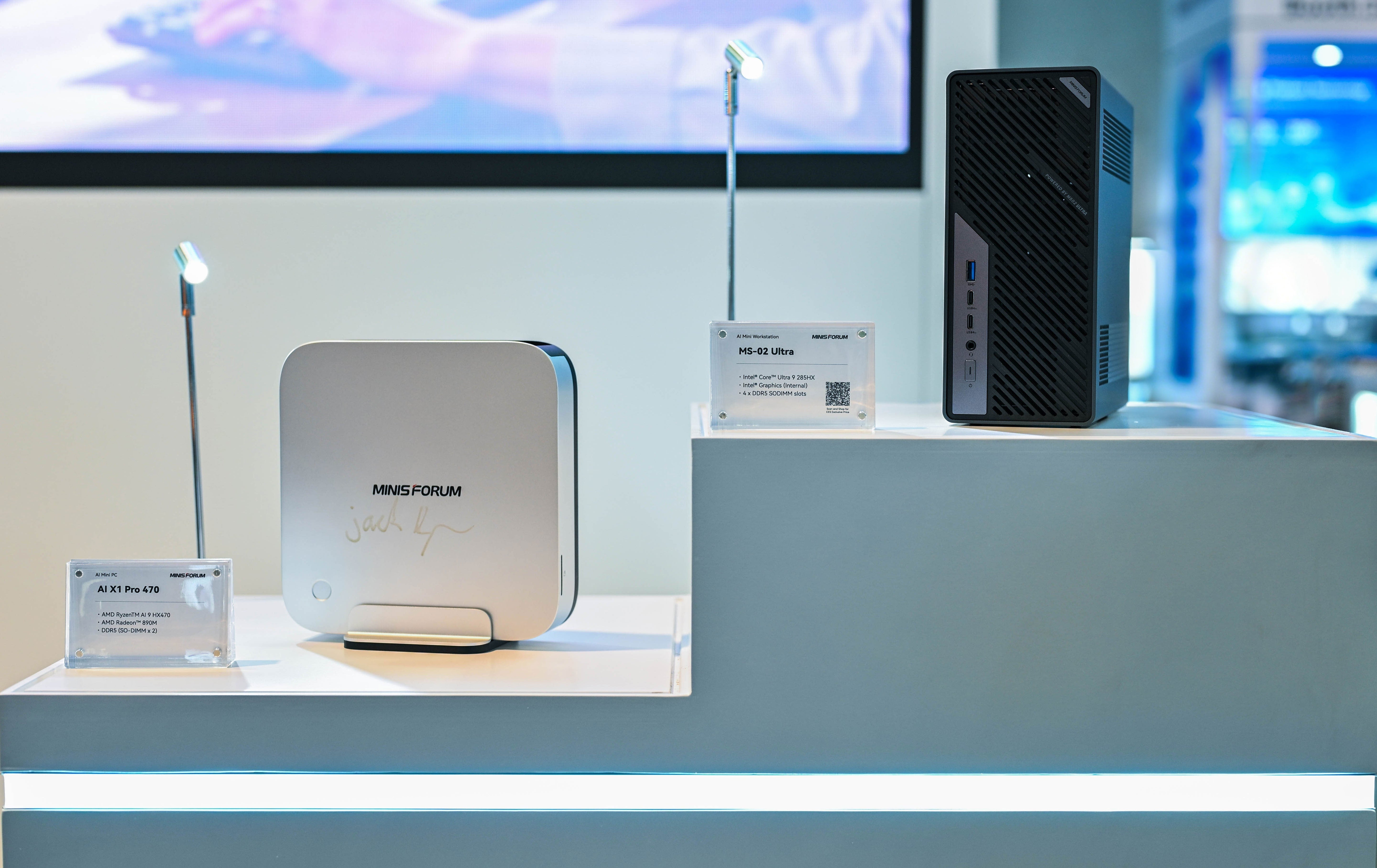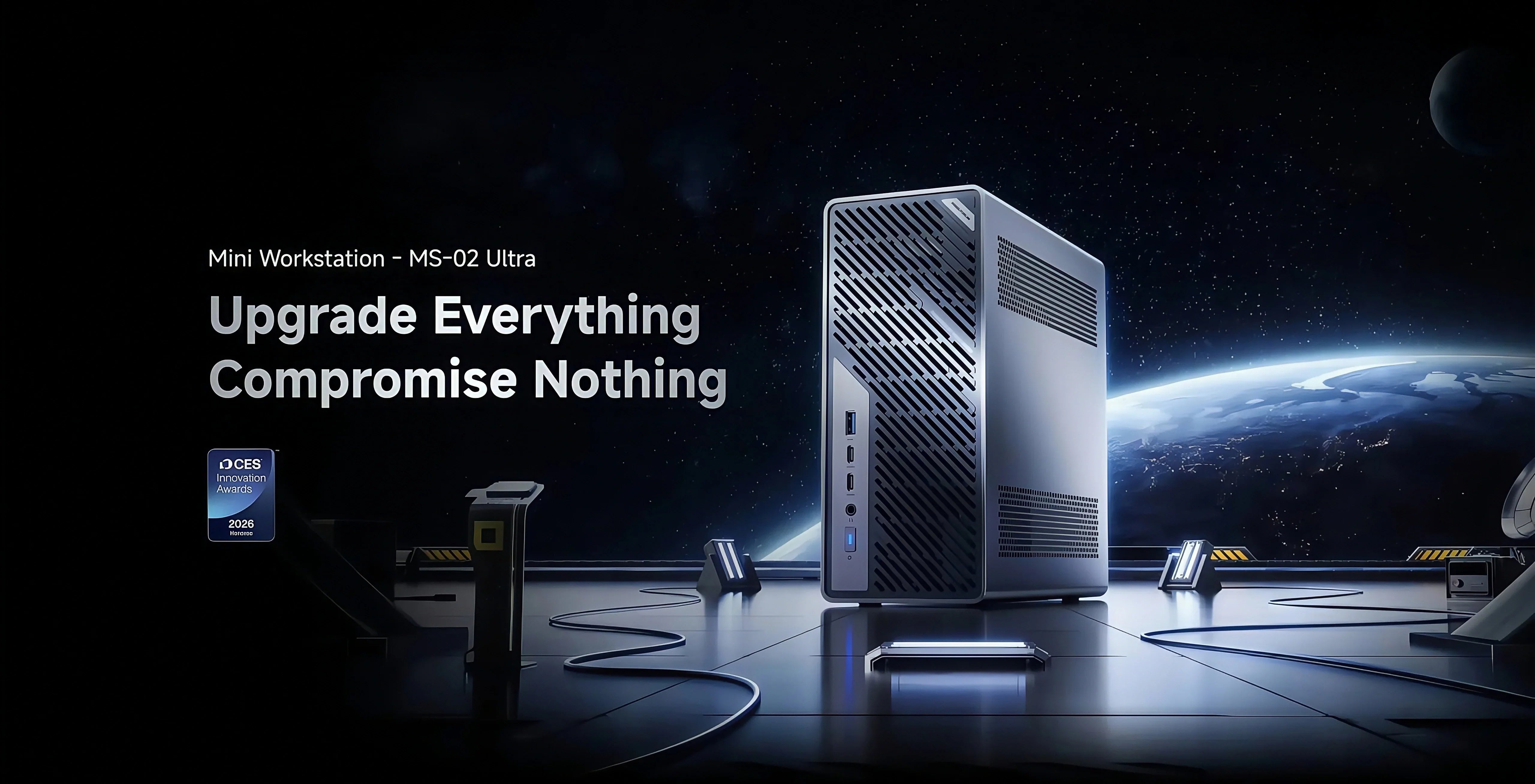What is a Mini Workstation and How to Choose One
In the world of technology, the pursuit of power and compactness has given rise to a special category - mini workstations. They perfectly blend the high-performance features of traditional workstations with a space-saving design, catering to the needs of both work and home server uses. So, what exactly is a mini workstation, and how can you pick the right one for yourself?

What is a Mini Workstation?
A mini workstation is a small-form-factor computer that delivers powerful performance. Different from traditional workstation towers, it has a compact and sleek design. Despite its small size, it can handle complex computing tasks and run professional software smoothly. It's like a condensed version of a powerful computer, combining the advantages of performance and portability.
Compared to ordinary mini hosts, mini workstations stand out in terms of performance and expandability. Some mini workstation designs retain the user-friendly expansion features of workstation computers. For example, they may have a pull-out motherboard design, making it easy for users to upgrade or replace components like memory and hard drives. This level of expandability is often lacking in regular mini hosts.
In addition, mini workstations usually come with richer and faster network interfaces than ordinary mini hosts. This makes them more suitable for tasks that require high-speed data transfer and stable network connections, such as serving as a home server or running network-intensive applications.
How to Choose a Mini Workstation?
Consider the Form Factor : The size of the mini workstation is crucial if you have space constraints. A smaller form factor allows for more flexible placement, whether on a desk, shelf, or even hidden away in a corner. However, a more compact size may sometimes limit the internal space for component upgrades, so it's essential to strike a balance between size and expandability based on your needs.

Assess Performance Requirements : Determine the tasks you'll be using the mini workstation for. For general office work, web browsing, and light multitasking, a mid-range processor and sufficient RAM may suffice. But for demanding applications like 3D rendering, video editing, or scientific computing, you'll need a high-performance CPU and possibly a dedicated GPU. Consider the processing power, number of cores, and clock speeds to ensure the workstation can handle your workload efficiently.
Check Expandability Options : Look for a mini workstation with good expandability if you anticipate future upgrades. Check if it allows for easy addition of more memory modules or storage drives. A pull-out motherboard design, as found in some models, makes upgrading components like RAM and hard drives much more convenient. Also, consider the availability of expansion slots for adding graphics cards or other peripherals if needed.
Evaluate Network Interface Capabilities : For users who need high-speed data transfer and stable network connections, such as those setting up a home server or working with large-scale data, the network interface is vital. A mini workstation with multiple high-speed network ports, like 10Gbps SFP+ ports and 2.5Gbps RJ45 ports, can provide faster data transfer speeds and more reliable network performance to meet the demands of various network scenarios.

If you're looking for a mini workstation that meets the above criteria, the Minisforum MS-A2 is worth considering. This remarkable device combines a compact form factor with powerful performance and excellent expandability.
The MS-A2 boasts a compact size of 196×189×48mm. Its slide-out motherboard design offers user-friendly convenience for upgrading components. It’s equipped with dual 10G SFP+ ports and dual 2.5G RJ45 ports, providing high-speed and stable network connections to meet the demands of data-intensive tasks and home server applications. Powered by the flagship-level AMD Ryzen™ 9 9955HX chip, the MS-A2 delivers exceptional processing power to handle even the most demanding workloads. It also features an integrated PCIe x16 slot, enabling the installation of a low-profile graphics card within the chassis to further enhance its graphical performance. Additionally, it supports U.2 interface SSDs for easy expansion of storage capacity.
In summary, when you're in the market for a mini workstation, it's crucial to weigh factors like form factor, performance, expandability, and network capabilities. A well - chosen mini workstation can serve as a versatile tool for both professional and home server uses. It can deliver the powerful performance needed for demanding tasks while saving space and offering the flexibility to grow with your needs. Whether you're a professional looking to boost productivity or someone seeking a robust home server solution, the right mini workstation can significantly enhance your digital workflow and provide a solid foundation for your computing requirements.




